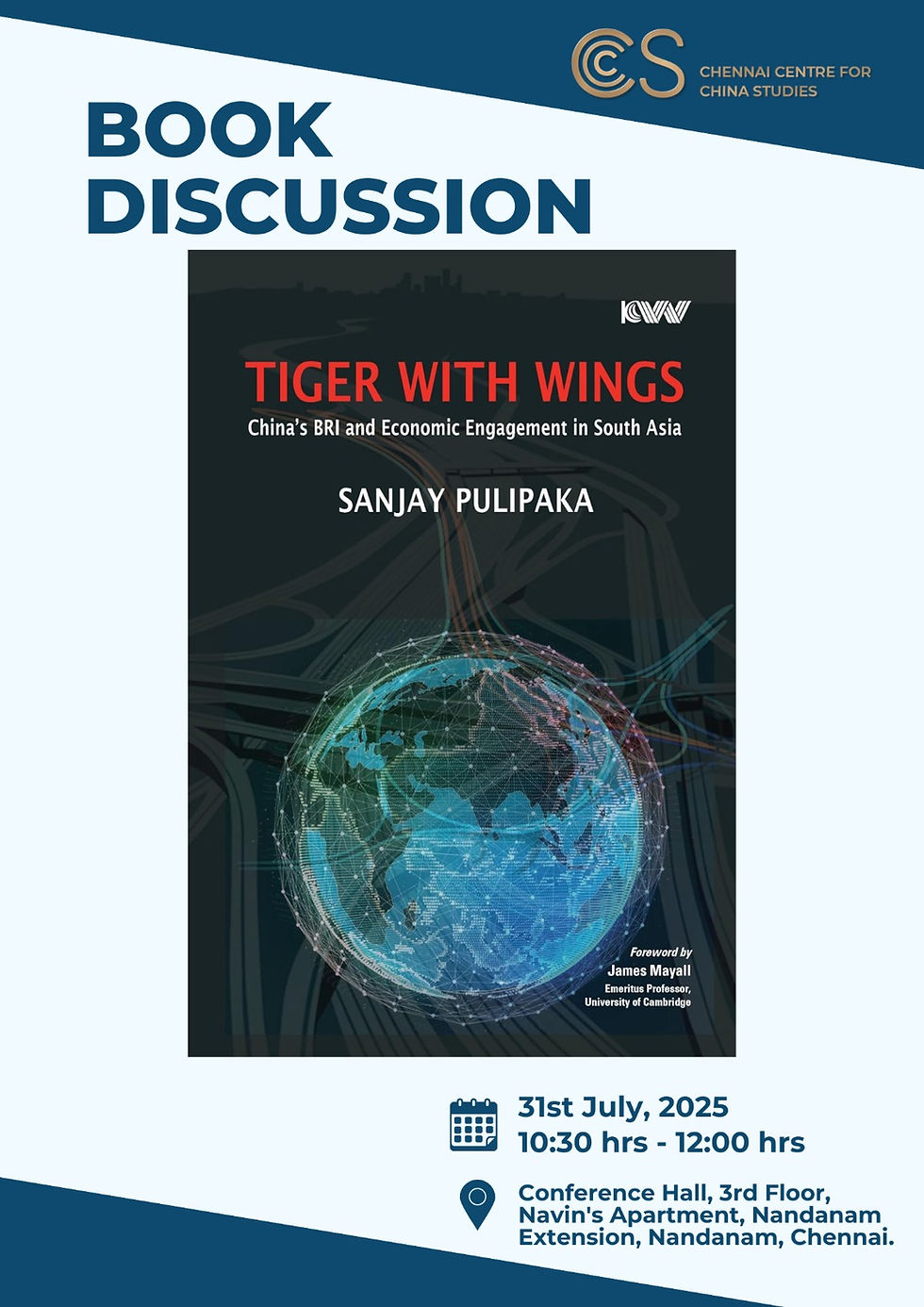India & China: An Assessment of October 2013 Agreements-MoU on Sister City Relations
- upSpark Technologies

- Oct 31, 2013
- 4 min read
In the modern era, the concept of sister city ties between countries in the world which in the main focuses on ‘people to people contact sand learning from each other’, have come to play a strong supportive role in making the development of international relations positive; this is especially so in the case of those bilateral ties which have come to suffer from mutual distrust due to geo-political differences.
Looking at India-China relations in this perspective, one has to recognise the likely healthy impact on them coming from the three agreements reached by the two nations, witnessed for the first time, on establishment of sister city relations between them (New Delhi-Beijing; Bengaluru-Chengdu and Kolkata-Kunming), during the visit of the Indian Prime Minister, Manmohan Singh, to Beijing in October 2013. The agreements are bound to benefit India and China in realising the stated objectives of ‘facilitating cooperation and linkages between sister cities in a variety of fields including public policy, culture, education, urban planning, waste water management, infrastructure, health, science and technology, tourism and culture’.
Importantly, the agreements convey the will of India and China to turn their attention now towards strengthening regional connectivity; this and other results of the visit of Dr Singh to Beijing, together indicate that the two nations have become keen to maximise the areas of convergence of their interests, while minimising the effect of their differences on strategic issues. But it has to be admitted that if India and China want to realise the full potential of their strategic partnership, they have to permanently eradicate all strategic discords between them. A key question is how long the two are prepared to wait for the same to happen? As of now, their approaches seem to vary substantially. Beijing’s stand now is in favour of ‘putting aside’ the contentious issues by calling for ‘shelving the differences and working for the common development’. New Delhi, on the other hand, appears to be against any ‘shelving’, preferring a quick solution to the dividing issues; reflecting this of late are Manmohan Singh’s remarks at the Party School in Beijing on 24 October 2013 that “we should move quickly to resolve our boundary issue.”
A comparative study of sister city initiatives being taken by the two countries will be in order for the purpose of identifying areas for mutual learning by each side. Firstly, it is clear that India lags behind China in the number of sister city connections established (about only 100 for India as against China’s 2024, with Shanghai, Suzhou and Beijing at the top of the table). The Chinese cities have tie ups with cities throughout the word including Washington, and London and in particular, the Asian cities of Kathmandu, Yangon, Hambantota, Nuwara Eliya, Chittagong , Islamabad, Tokyo, Hanoi, Jakarta, Medan, Bangkok, Seoul, and Manila. Secondly, the nodal agency for establishing sister city links in India is a government body – the Ministry of External Affairs (MEA), whereas in China the corresponding agency is the China International Friendship Cities Association, which functions under the sponsorship of ‘ a non-governmental diplomacy organisation’ , that is the Chinese People’s Association for Friendship with Foreign Countries. Third relates to the need for clarification in both India and China on whether the local authorities in the respective countries can take their own initiatives for doing sister city link ups. (As instances, the Mayor of Hyderabad, India, made the first move to establish ties with Brisbane, Australia and the administration in Hainan province of China did the same in setting up ties with Jeju-do, South Korea). Presumably, in both cases, the approval of the Centre was obtained.
As lessons, it would be in India’s interests to make its sister-city programme more active as what is being witnessed in China. India may also consider creating a non-governmental body like the one in China to handle matters relating to sister-city tie ups; that will reduce the work pressure on its MEA. The choices of cities made by India and China for sister-city tie ups seem to be appropriate. Delhi and Beijing have many things in common. They are national capitals with sizable population, already having sister city ties with many countries in the world. Similarities exist between Bengaluru and Chengdu. The former is India’s IT hub and the latter has emerged as China’s electronics manufacturing centre. Indian IT firms are present in Chengdu. Networking equipment manufacturer CISCO has presence both in Bengaluru and Chengdu. Chinese firms Huawei and ZTE are operating in Bengaluru.
In terms of potentials including population and connectivity, commonality also exists between the third selected pair-Kolkata and Kunming. Kunming has merged as China’s gateway to East and South Asia and is important for the progress of India’s Look East policy. Being envisaged are highway and rail projects linking Kunming with Singapore. The strategic significance of Kolkata-Kunming tie up comes out clear in the context of the proposed Bangladesh-China-India-Myanmar (BCIM) Economic corridor. There are potentials for the further growth of India and China sister-city cooperation. Setting up a link between Mumbai and Shanghai, the two commercial capitals, can be considered by the two countries as their future target.
(The writer, D.S.Rajan, is Director, Chennai Centre for China Studies (C3S). This article is published under a joint programme on assessing India-China October 2013 agreements of the C3S and the Institute of Peace and Conflict Studies (IPCS), New Delhi. Email: director.c3s@gmail.com)















Comments